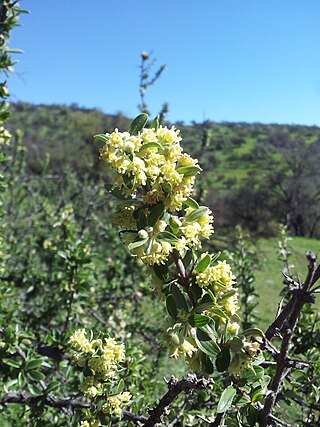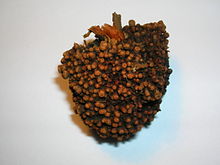
The Actinomycetota are a diverse phylum of Gram-positive bacteria with high G+C content. They can be terrestrial or aquatic. They are of great economic importance to humans because agriculture and forests depend on their contributions to soil systems. In soil they help to decompose the organic matter of dead organisms so the molecules can be taken up anew by plants. While this role is also played by fungi, Actinomycetota are much smaller and likely do not occupy the same ecological niche. In this role the colonies often grow extensive mycelia, like a fungus would, and the name of an important order of the phylum, Actinomycetales, reflects that they were long believed to be fungi. Some soil actinomycetota live symbiotically with the plants whose roots pervade the soil, fixing nitrogen for the plants in exchange for access to some of the plant's saccharides. Other species, such as many members of the genus Mycobacterium, are important pathogens.

Rhizobia are diazotrophic bacteria that fix nitrogen after becoming established inside the root nodules of legumes (Fabaceae). To express genes for nitrogen fixation, rhizobia require a plant host; they cannot independently fix nitrogen. In general, they are gram negative, motile, non-sporulating rods.

The phylum Bacteroidota is composed of three large classes of Gram-negative, nonsporeforming, anaerobic or aerobic, and rod-shaped bacteria that are widely distributed in the environment, including in soil, sediments, and sea water, as well as in the guts and on the skin of animals.

Dryas is a genus of perennial cushion-forming evergreen dwarf shrubs in the family Rosaceae, native to the arctic and alpine regions of Europe, Asia and North America. The genus is named after the dryads, the tree nymphs of ancient Greek mythology. The classification of Dryas within the Rosaceae has been unclear. The genus was formerly placed in the subfamily Rosoideae, but is now placed in subfamily Dryadoideae.
Diazotrophs are bacteria and archaea that fix atmospheric nitrogen(N2) in the atmosphere into bioavailable forms such as ammonia.

Micromonosporaceae is a family of bacteria of the class Actinomycetia. They are gram-positive, spore-forming soil organisms that form a true mycelium.

Root nodules are found on the roots of plants, primarily legumes, that form a symbiosis with nitrogen-fixing bacteria. Under nitrogen-limiting conditions, capable plants form a symbiotic relationship with a host-specific strain of bacteria known as rhizobia. This process has evolved multiple times within the legumes, as well as in other species found within the Rosid clade. Legume crops include beans, peas, and soybeans.

Acholeplasmataceae is a family of bacteria. It is the only family in the order Acholeplasmatales, placed in the class Mollicutes. The family comprises the genera Acholeplasma and Phytoplasma. Phytoplasma has the candidatus status, because members still could not be cultured.

The Actinomycetales is an order of Actinomycetota. A member of the order is often called an actinomycete. Actinomycetales are generally gram-positive and anaerobic and have mycelia in a filamentous and branching growth pattern. Some actinomycetes can form rod- or coccoid-shaped forms, while others can form spores on aerial hyphae. Actinomycetales bacteria can be infected by bacteriophages, which are called actinophages. Actinomycetales can range from harmless bacteria to pathogens with resistance to antibiotics.

The Bifidobacteriaceae are the only family of bacteria in the order Bifidobacteriales. According to the 16S rRNA-based LTP release 106 published by 'The All-Species Living Tree' Project, the order Bifidobacteriales is a clade nested within the suborder Micrococcineae, also the genus Bifidobacterium is paraphyletic to the other genera within the family, i.e. the other genera are nested within Bifidobacterium.

Streptomycetaceae is a family of the class Actinomycetota, making up the monotypic order Streptomycetales. It includes the important genus Streptomyces. This was the original source of many antibiotics, namely streptomycin, the first antibiotic against tuberculosis.
Actinorhizal plants are a group of angiosperms characterized by their ability to form a symbiosis with the nitrogen fixing actinomycetota Frankia. This association leads to the formation of nitrogen-fixing root nodules.
Kribbella is a genus of bacteria first discovered in 1999.

Trevoa is a genus of actinorhizal plants; these dicotyledon flora are trees or small shrubs. The genus was first proposed by Miers in 1825, but was not fully described until 1830 by Sir William Jackson Hooker. Genus members are notable for their ability to fix nitrogen. Species of this genus are generally found in the near coastal forests and arid shrubland of South America. Some species are localized in the mountains of central Chile; for example, the species Trevoa trinervis occurs in the La Campana National Park and other proximate areas of central Chile.

Frankia alni is a Gram-positive species of actinomycete filamentous bacterium that lives in symbiosis with actinorhizal plants in the genus Alnus. It is a nitrogen-fixing bacterium and forms nodules on the roots of alder trees.
Adlercreutzia is a genus in the phylum Actinomycetota (Bacteria).
Nocardia alni is a species of bacteria from the genus Nocardia that has been isolated from the root nodules of Alnus glutinosa.
Blastococcus is a Gram-positive, coccoid and aerobic genus of bacteria from the family of Geodermatophilaceae.
Yinghuangia is an Actinobacteria genus in the family Streptomycetaceae.
The Eggerthellaceae are a family of Gram-positive, rod- or coccus-shaped Actinomycetota. It is the sole family within the order Eggerthellales.












